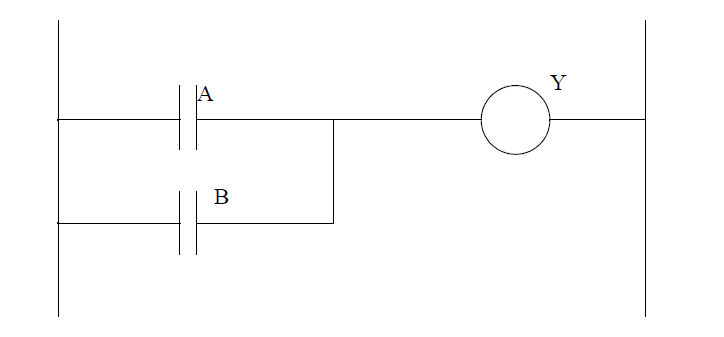In this forum discussion, you can find the list of PLC practice problems and their solutions.
PLC Practice Problems
-
Give an example of where a PLC could be used.
-
Why would relays be used in place of PLCs?
-
Give a concise description of a PLC.
-
List the advantages of a PLC over relays.
-
A PLC can effectively replace a number of components. Give examples and discuss some good and bad applications of PLCs.
-
Explain why ladder logic outputs are coils?
-
In the figure below, will the power for the output on the first rung normally be on or off? Would the output on the second rung normally be on or off?
- Write the mnemonic program for the Ladder Logic below.
PLC Practice Solutions
-
To control a conveyor system
-
For simple designs
-
A PLC is a computer based controller that uses inputs to monitor a process, and uses outputs to control a process using a program.
-
Less expensive for complex processes, debugging tools, reliable, flexible, easy to expand, etc.
-
A PLC could replace a few relays. In this case the relays might be easier to install and less expensive. To control a more complex system the controller might need timing, counting and other mathematical calculations. In this case a PLC would be a better choice.
-
The ladder logic outputs were modelled on relay logic diagrams. The output in a relay ladder diagram is a relay coil that switches a set of output contacts.
-
off, on
-
Generic: LD A, LD B, OR, ST Y, END; Allen Bradley: SOR, BST, XIO A, NXB, XIO B, BND, OTE Y, EOR, END
PLC Assignment Problems
-
Explain the trade-offs between relays and PLCs for control applications.
-
Develop a simple ladder logic program that will turn on an output X if inputs A and B, or input C is on.

